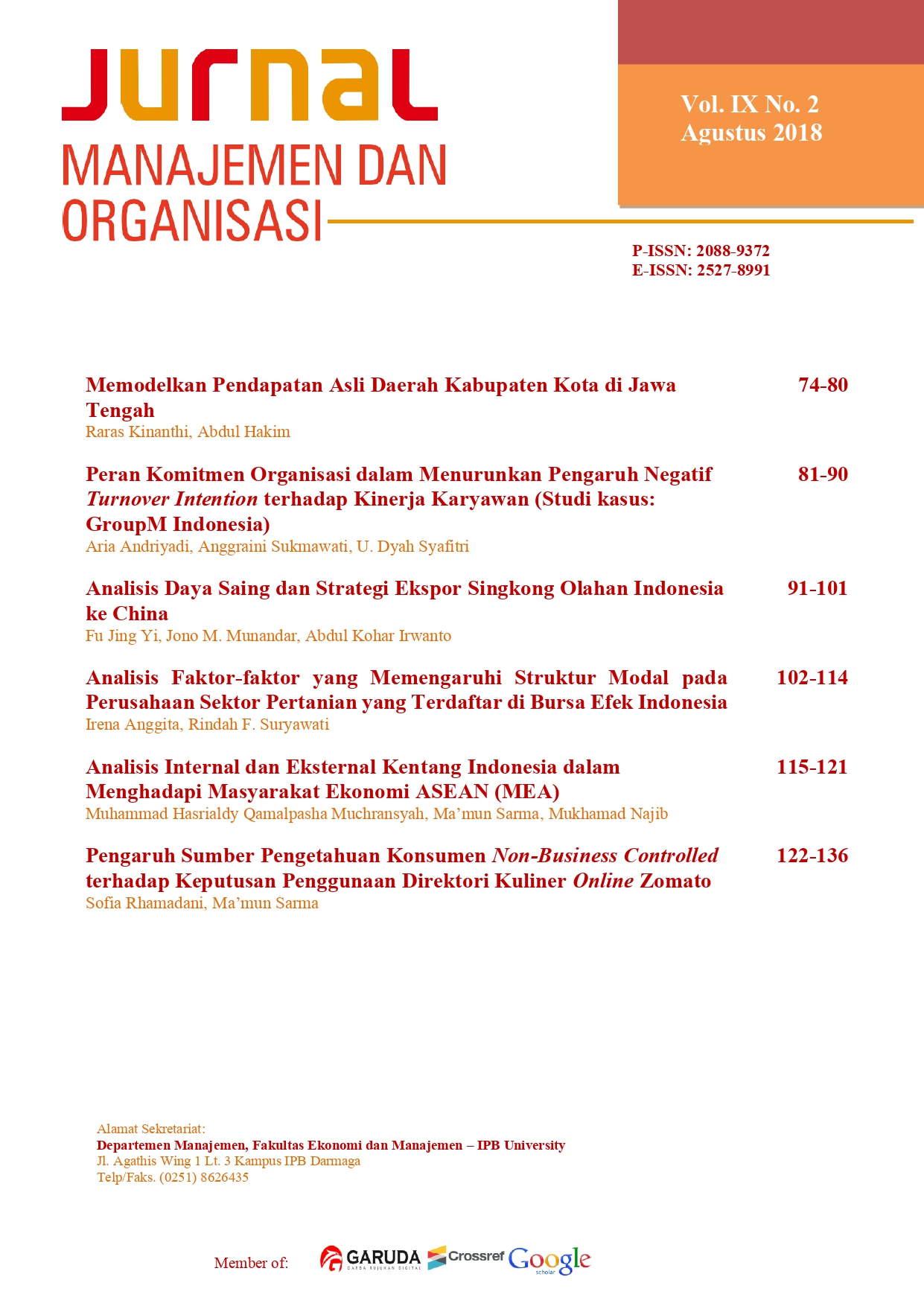Analisis Daya Saing dan Strategi Ekspor Singkong Olahan Indonesia ke China
Abstract
Cassava (Manihot esculenta Crantz) is one of the export commodities from food crops sector and has many potencies to be developed. Indonesia is one of the top-10 biggest countries that can produced cassava for the world. This research aimed to 1) identify the competitiveness rate of Indonesian processed cassava export to China as the destination country, 2) identify the internal and external factors of export of Indonesian processed cassava to China, and 3) identify the strategies that can be used to improve the export competitiveness of processed cassava to China. Revealed Comparative Advantage (RCA), was implemented to determinded the competitiveness rate of Indonesian processed cassava. Indonesian processed cassava in China’s export market for 5 years period from 2012 to 2016 has an average RCA index less than 1. This shows that during the whole year period, Indonesian processed cassava has weak comparative advantage, and also has a fairly low competitiveness in the China market. From that result, strategies to improve the competitiveness of cassava sales both from export and import can be done by using SWOT analysis. The results of the SWOT analysis can generate the alternative strategies through AHP analysis. The integration of internal and external factors needs to be done as a strategy of market penetration of processed cassava of Indonesia. Strategic alternatives that become the main priority in the effort to increase the export competitiveness of Indonesian processed cassava are farmers with starch products and technology adoption to increase the fulfillment of export quantity of processed cassava.


.jpg)




